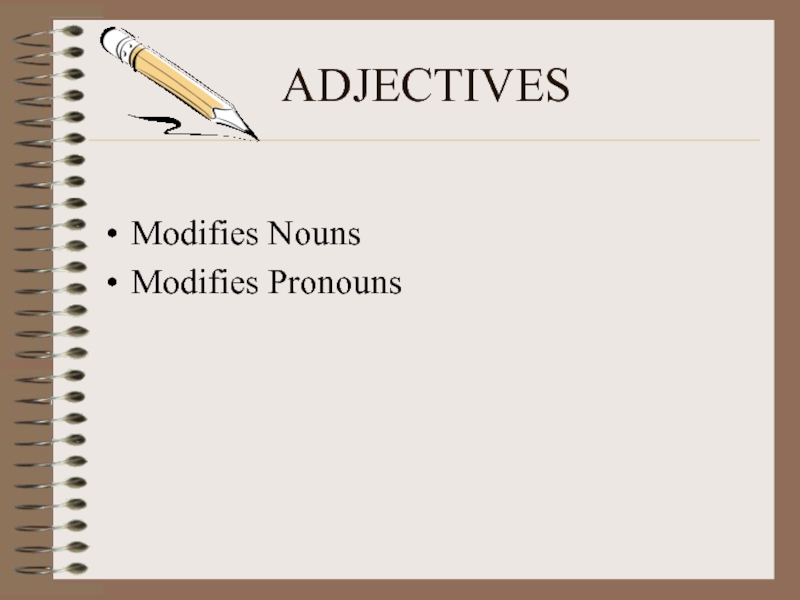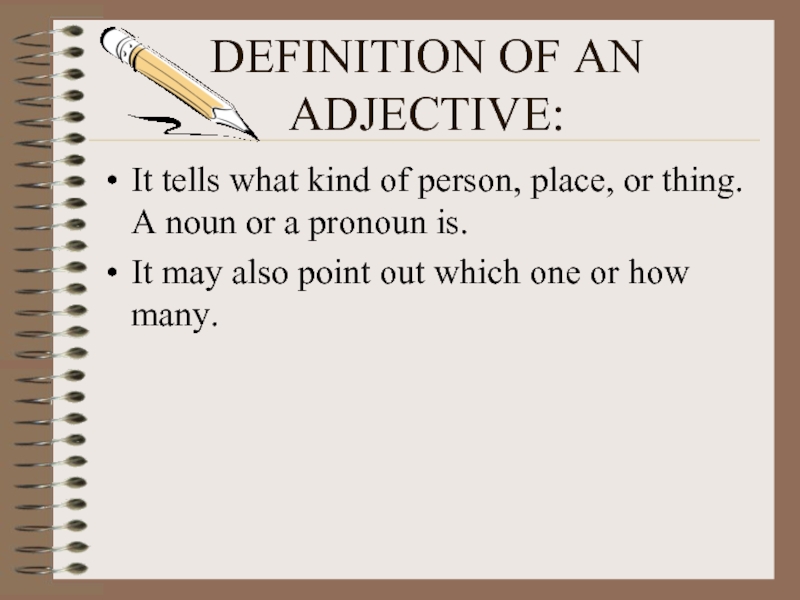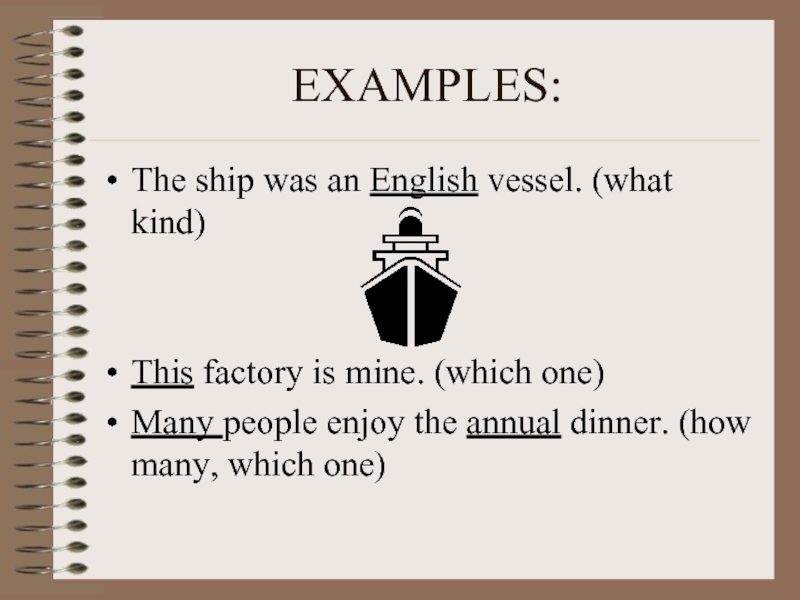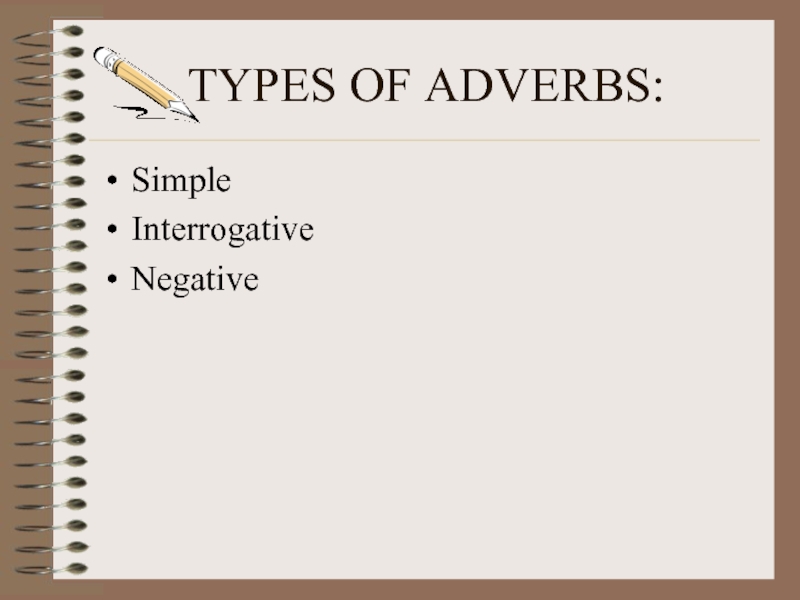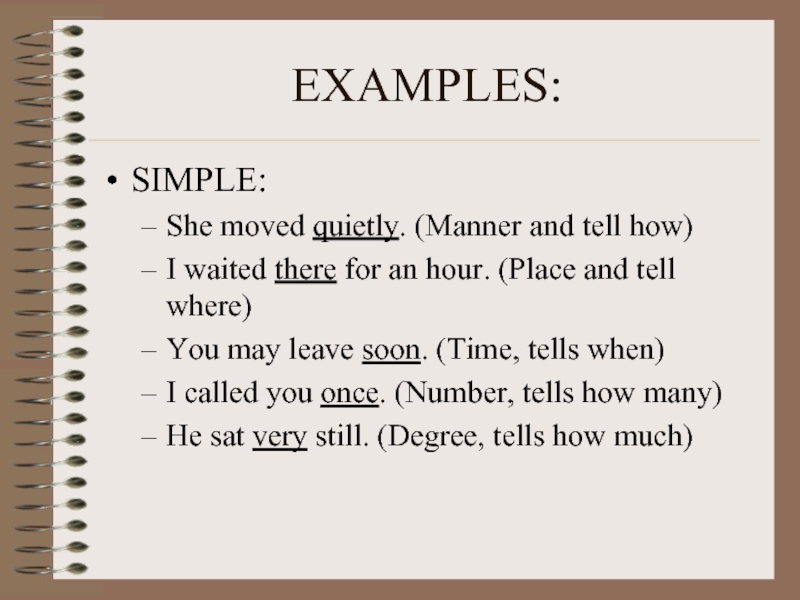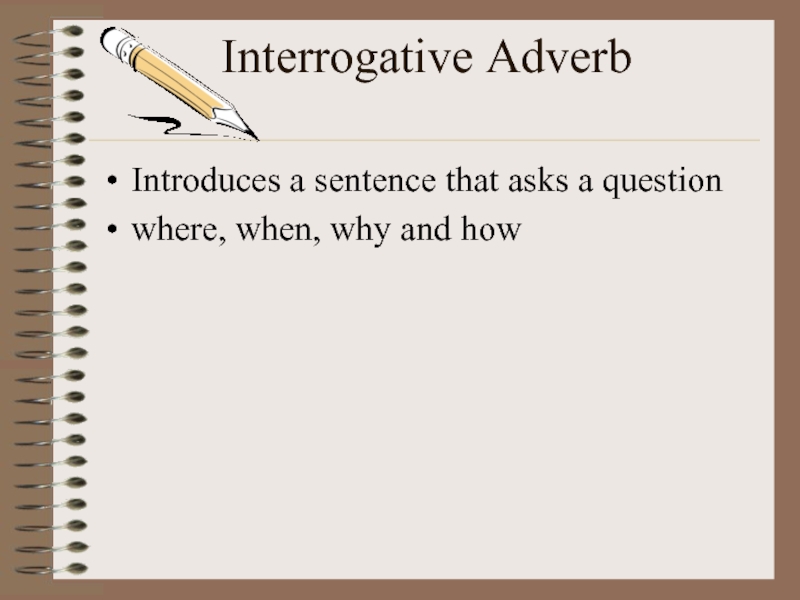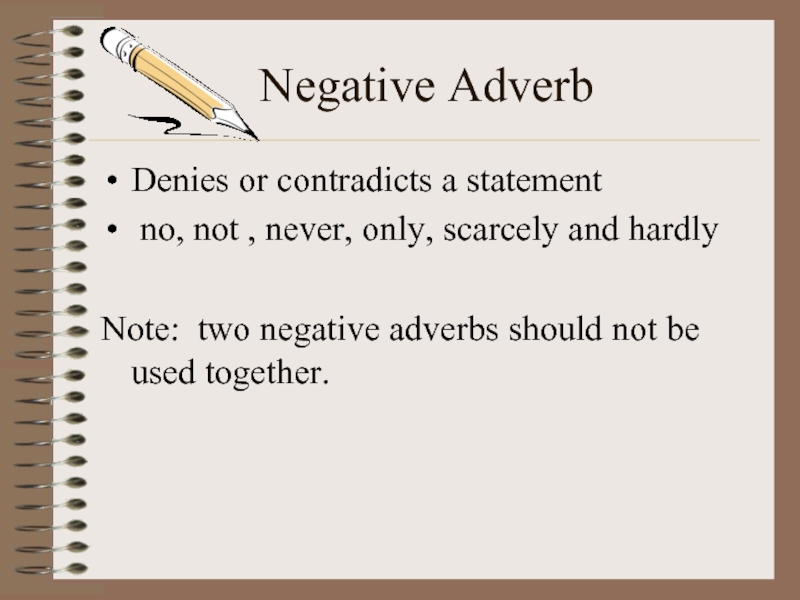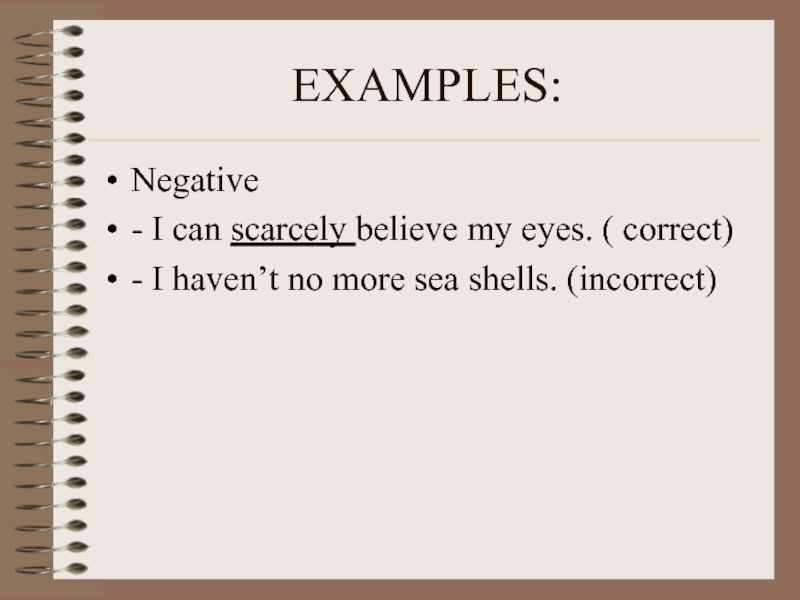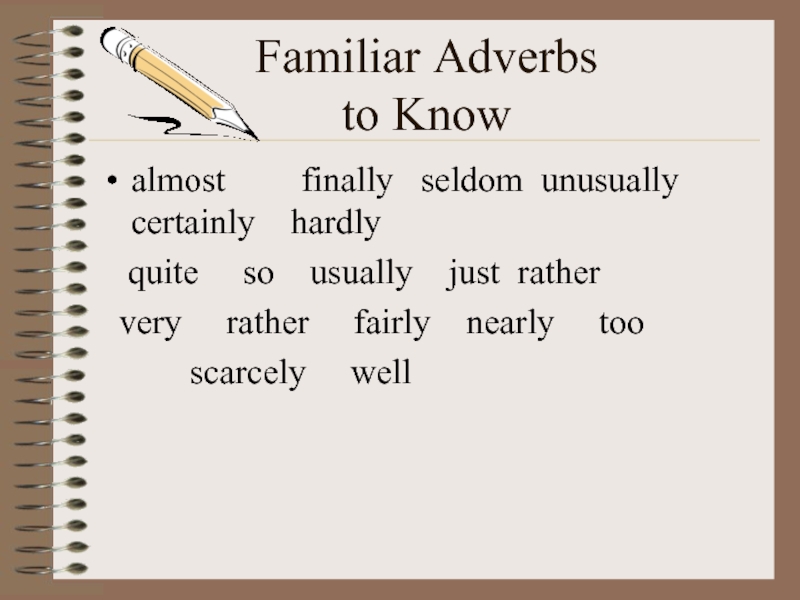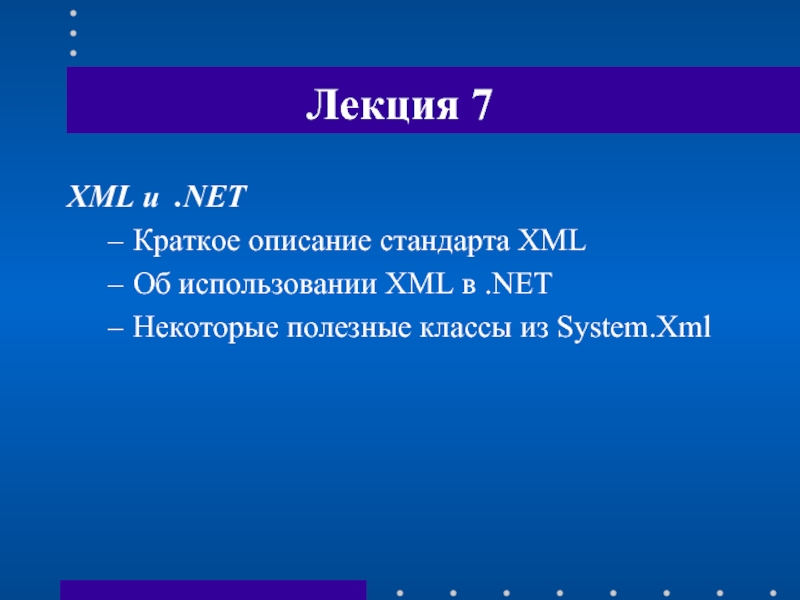- Главная
- Разное
- Дизайн
- Бизнес и предпринимательство
- Аналитика
- Образование
- Развлечения
- Красота и здоровье
- Финансы
- Государство
- Путешествия
- Спорт
- Недвижимость
- Армия
- Графика
- Культурология
- Еда и кулинария
- Лингвистика
- Английский язык
- Астрономия
- Алгебра
- Биология
- География
- Детские презентации
- Информатика
- История
- Литература
- Маркетинг
- Математика
- Медицина
- Менеджмент
- Музыка
- МХК
- Немецкий язык
- ОБЖ
- Обществознание
- Окружающий мир
- Педагогика
- Русский язык
- Технология
- Физика
- Философия
- Химия
- Шаблоны, картинки для презентаций
- Экология
- Экономика
- Юриспруденция
ADJECTIVES & ADVERBS RULES TO FOLLOW ADJECTIVES Modifies Nouns Modifies Pronouns. презентация
Содержание
- 2. ADJECTIVES & ADVERBS RULES TO FOLLOW
- 3. ADJECTIVES Modifies Nouns Modifies Pronouns
- 4. DEFINITION OF AN ADJECTIVE: It tells what
- 5. EXAMPLES: The ship was an English vessel.
- 6. AN ADVERB: Modifies an active verb or
- 7. TYPES OF ADVERBS: Simple Interrogative Negative
- 8. EXAMPLES: SIMPLE: She moved quietly. (Manner and
- 9. Interrogative Adverb Introduces a sentence
- 10. EXAMPLES: Interrogative: When will you return? How is the trunk being sent?
- 11. Negative Adverb Denies or contradicts a statement
- 12. EXAMPLES: Negative - I can scarcely
- 13. Familiar Adverbs to Know almost finally seldom unusually certainly hardly
- 14. This powerpoint was kindly donated to www.worldofteaching.com
Слайд 4DEFINITION OF AN ADJECTIVE:
It tells what kind of person, place, or
thing. A noun or a pronoun is.
It may also point out which one or how many.
It may also point out which one or how many.
Слайд 5EXAMPLES:
The ship was an English vessel. (what kind)
This factory is mine.
(which one)
Many people enjoy the annual dinner. (how many, which one)
Many people enjoy the annual dinner. (how many, which one)
Слайд 6AN ADVERB:
Modifies an active verb or a verb phrase by expressing
manner, place, time, degree, or number.
Слайд 8EXAMPLES:
SIMPLE:
She moved quietly. (Manner and tell how)
I waited there for an
hour. (Place and tell where)
You may leave soon. (Time, tells when)
I called you once. (Number, tells how many)
He sat very still. (Degree, tells how much)
You may leave soon. (Time, tells when)
I called you once. (Number, tells how many)
He sat very still. (Degree, tells how much)
Слайд 11Negative Adverb
Denies or contradicts a statement
no, not , never, only,
scarcely and hardly
Note: two negative adverbs should not be used together.
Note: two negative adverbs should not be used together.
Слайд 12EXAMPLES:
Negative
- I can scarcely believe my eyes. ( correct)
- I
haven’t no more sea shells. (incorrect)
Слайд 13Familiar Adverbs
to Know
almost finally seldom unusually certainly hardly
quite so
usually just rather
very rather fairly nearly too
scarcely well
very rather fairly nearly too
scarcely well
Слайд 14This powerpoint was kindly donated to www.worldofteaching.com
http://www.worldofteaching.com is home to over
a thousand powerpoints submitted by teachers. This is a completely free site and requires no registration. Please visit and I hope it will help in your teaching.


